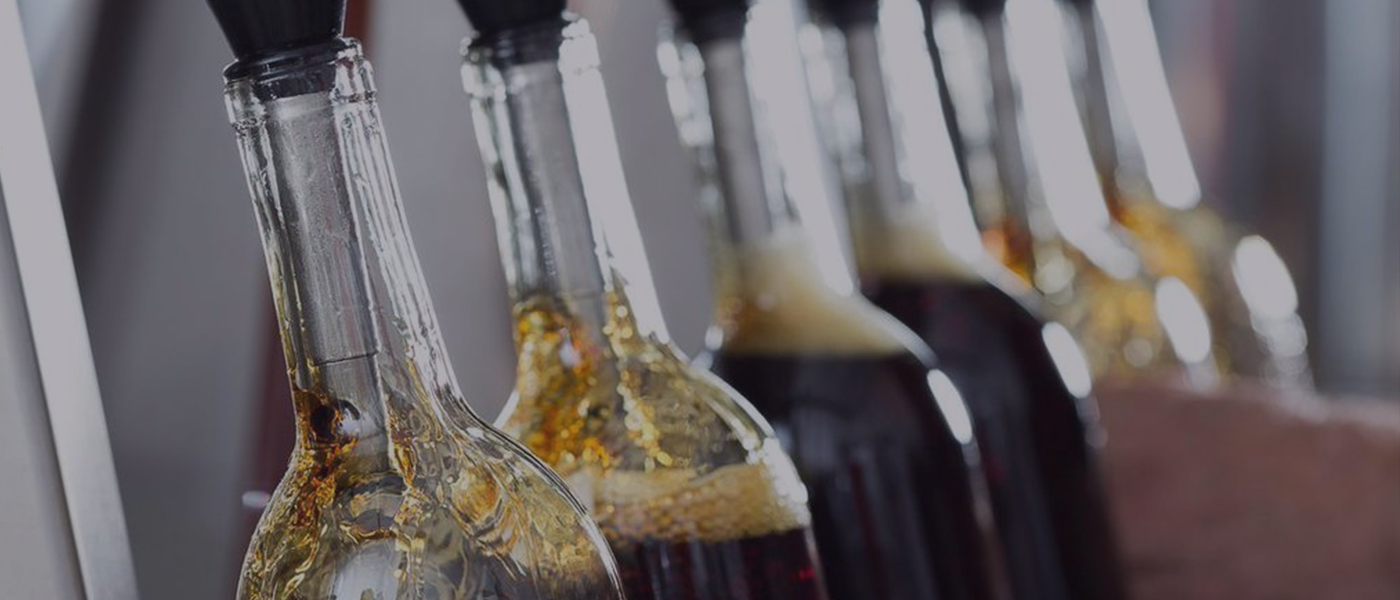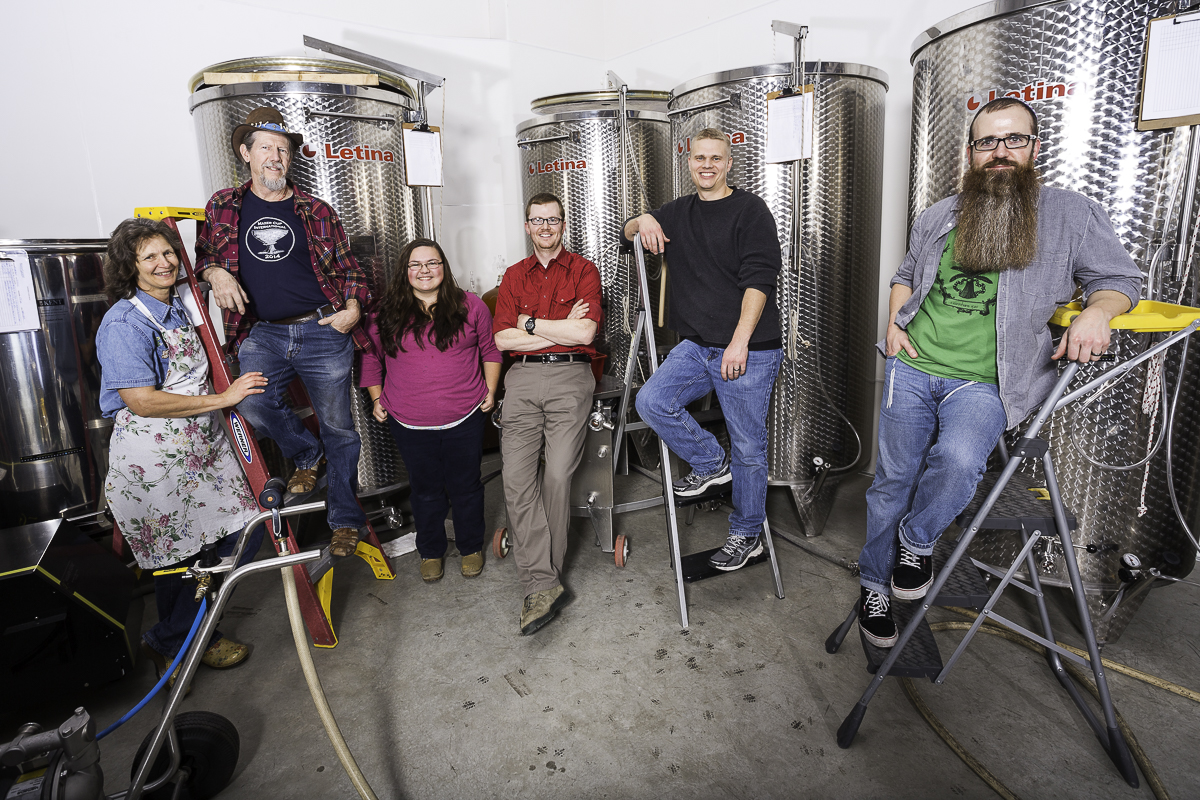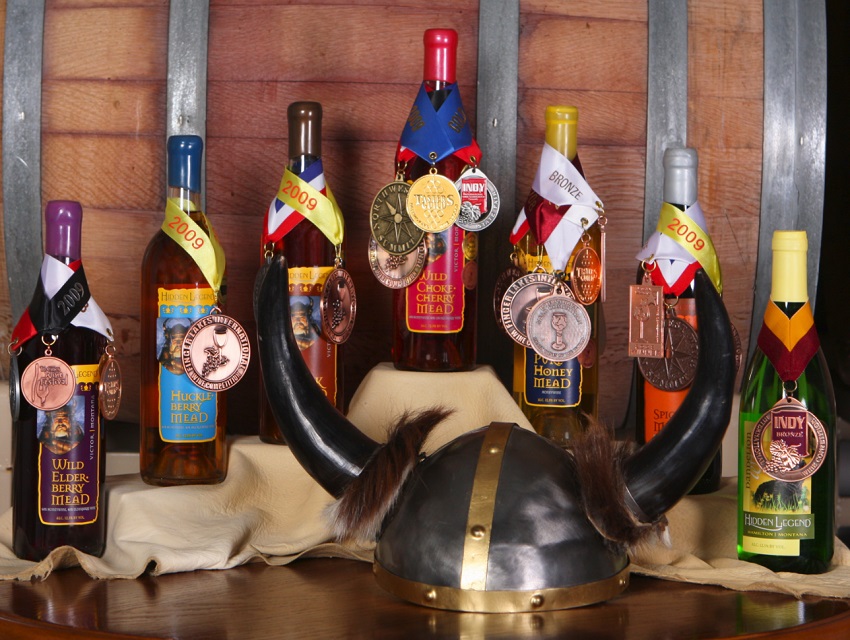
Mead & Honey Wine – Complete Starter Guide
Everything You Could Want To Know About Mead
You might have heard about mead before, whether as something people used to drink way back when or as an old style of beverage that’s making a comeback. You might have even heard it’s made from honey. (It is!)
If you want to know more about mead wines, then this guide is for you. If you already know everything but just like reading about it, this is for you too. By the end, you’ll know everything you need to know about mead.
What is Mead? The Ancient Honey Wine Explained
Mead is an alcoholic beverage made from honey. It’s about as simple as fermented beverages get, as the basic version is nothing more than honey, water, and yeast. Other ingredients can be added, of course, but those are the basic ingredients.
Isn’t It Just Honey Wine?
The terms “honey wine” and “mead” are used interchangeably, though traditional mead is technically it’s own class of beverage.
What makes “wine” wine? Wines are made from some sort of fruit, usually specific varietals of grape….though not exclusively; plenty of other fruits can be used to make wine. The juice, or a macerated pulp called a “must”, of grapes is fermented by yeast to create a liquid containing somewhere between 5 and 20 percent alcohol by volume. Vintners – wine makers – use the former method to make white wines and the latter to make red wine, as grape skins give red wine its color, the tannins and imparts flavors not otherwise present in white wine.
How is Mead Made?
Mead (or honey wine if one must) is made by mixing honey with water and adding yeast. The mixture undergoes fermentation, where the yeast cells consume sugars and excrete ethanol, a hydrocarbon and the portable form of alcohol.
Mead is really its own class of beverage. Though many meads are made with winemaking strains of yeast, it isn’t made from a juice or must of some type of fruit. Malted grain or pressed fruits aren’t involved, so it isn’t a beer or cider either – therefore, mead is really in a class all its own.
If you are interested in making mead yourself, try one of our Mead Making Kits.
When Was Mead Invented?
No one knows for sure (it’s impossible to know without a time machine!) but the first evidence of mead dates to the 7th millennium BCE. Traces of fermented honey and other fermented beverages was found in pottery dating to that time in Northern China. The Europeans came a little later to the game; the first known evidence of mead dates to around the 3rd millennium BCE.
How was mead invented?
Well, the earliest fermented beverages all came about by accident. The prevailing theory is that a container of honey – possibly a honeycomb or something along those lines – was filled with water and was fermented by the wild yeast floating in the air. Some people found the water, drank it, and enjoyed the effects. A similar theory goes for both wine and beer since that’s the most plausible explanation for the advent of these drinks.
Mead History
Mead history is long and rich. Apart from mead being one the oldest alcoholic beverages known to man, it first appears in writing in the Rigveda, one of the books of the Vedic religion of ancient India in the 2nd millennium BCE. It appears in the writings of numerous ancient cultures, including classical Greece and Rome (Aristotle and Pliny the Elder both touched n it) and the English, French, Scandinavian and Irish primary chronicles, and many more besides.
In the epic “Beowulf,” the titular character does battle with the monster Grendel in a mead hall, with his arm steeled by a tipple. Mead is the drink of choice in the Miller’s Tale of Chaucer’s “Canterbury Tales,” and Elrond, the Elven king in the “Lord Of The Rings” saga, has a mead hall of his own.
In the Viking sagas, there’s a legendary drink called the Mead of Poetry. Drinking it would instantly turn the drinker into a poet.
Given the number of cultures that have made some form of it, there are many names for mead. It’s called myod and medovukha in Russia, miod pitny in Poland, medovina in Serbia and Montenegro, tej or mes in Ethiopia, iQhilika to the Xhosa of South Africa, the Maya made pitarilla, balche and xtalbentun, chouchen is the mead of Brittany, medovina in Croatia, midus in Lithuania, and many more.
Mead was the preferred drink of luxury, the “nectar of the gods”. Indeed, it was the premium lifestyle beverage for most of history. Egyptian pharaohs, Greek philosophers, Irish kings, Viking jarls, princes of Kievan Rus and so many others throughout the ages enjoyed mead.
Bees likewise appear in the mythology and symbolism of cultures stretching from ancient India to the ancient Middle East and throughout Western Europe, especially among royalty. “He of the Sedge and Bee” was in the titles of pharaohs after the unification of Upper and Lower Egypt, and bees are on the coats of arms of the Merovingian dynasty of France, the Barberinis of Italy and of Napoleon Bonaparte.
Popular Types of Mead: From Traditional to Fruity Blends
There are many different types of mead. There are unflavored meads, which are made only with honey, water, and yeast, and there are flavored meads, which have any number of flavoring agents added to it, like maple syrup or apple juice.
Unflavored meads generally come in three varieties – sweet mead, dry mead, and semi-sweet or semi-dry mead. Generally, these speak for themselves; sweet mead is sweet to the taste, dry is not, and the others fall in between.
Melomel is mead made with fruits. Varieties of melomel include cyser (mead mixed with apple juice or cider), pyment (mead mixed with grapes and/or wine), morat (mead flavored with mulberries), rubamel (mead flavored with raspberries) and many more.
Metheglin is mead flavored with herbs and spices. For example, mulled mead is made with mulling spices, just like mulled wine or cider, gvorc is a Czech spiced mead and there’s a popular mead in Nepal called Dandaghare, made with Himalayan spices. Rhodomel is a type mead made with rose hips…among so many other varieties.
Braggot is a mead mixed with beer (malted barley and hops) popularized in Wales. The Greeks invented oxymel, a mead made with wine vinegar.
Some meads are aged for significant periods, much like a balsamic vinegar (many types of Russian myod are made this way) and others are bottled and sold as quickly as fermentation has ended. Some meads are carbonated, and others are still. Some other mead types include: sack mead, sparkling mead, short mead, grape mead, fruit mead, low alcohol mead, and other spiced meads. Just like wines and ales, there are many different variations on mead and mead making; as varied as the cultures and countries that produce it.
Is There A Specific Mead Honey Just Like Cider Apples?
Mead honey can actually be virtually any kind of honey, and each type of honey produces a different flavor of mead. Orange blossom, acacia, and clover honey – very common varieties – are great for making classic meads, as they are high in sugar but have mild, sweet flavors. Other honey such as buckwheat, blackberry, elderberry mead, and wildflower honey, however, are often used for meads with strong flavoring agents.
What Is The Mead Alcohol Content?
Mead alcohol content varies from mead maker to mead maker. The alcohol content of a fermented beverage depends largely on the available amount of sugars in the substance being fermented and the type of yeast that’s used. Beer yeast, for instance, doesn’t tend to survive alcohol content of 10 percent by volume or more; wine year tends to die when between 15 and 20 percent ABV.
Granted, that also depends on the strain of yeast being used; some brewer’s yeasts and wine yeasts can tolerate higher alcohol concentrations.
Mead, being generally made using wine yeast, tends to have wine-like alcohol content, so the alcohol content of mead is typically between 8 and 20 percent alcohol by volume; somewhere between 12 and 16 percent is very common indeed. However, some meads have alcohol content closer to that of beer or cider.
The Mead Renaissance
Mead never really went away, as it has always been produced in most of the rest of the world…though it would seem there are far fewer producers today than there were centuries ago. However, the past few decades have seen a surge in interest in craft brewing and distilling around the world. Craft beer barely existed 30 years ago; today it’s a multi-billion dollar, global industry.
Craft mead has followed suit. Two decades ago, the amount being made in the United States was negligible. Today, there are more than 200 craft meaderies…and more are opening their doors every year. Their products are likewise beginning to appear on store shelves across the country and indeed, across the globe.
It’s no longer a drink for only royalty; anyone can enjoy the sweet honey wine of kings. Take a look at our Mead Wine Selection and try some premium mead today.Some other mead types include: sack mead, sparkling mead, short mead, grape mead, fruit mead, low alcohol mead, and other spiced meads. Just like wines and ales, there are many different variations on mead and mead making; as varied as the cultures and countries that produce it.

How to Bottle Mead for Aging and Storage
Help Save The Bees By Drinking Mead




